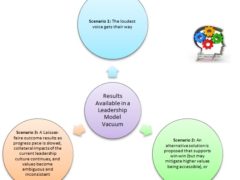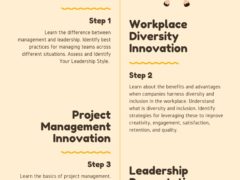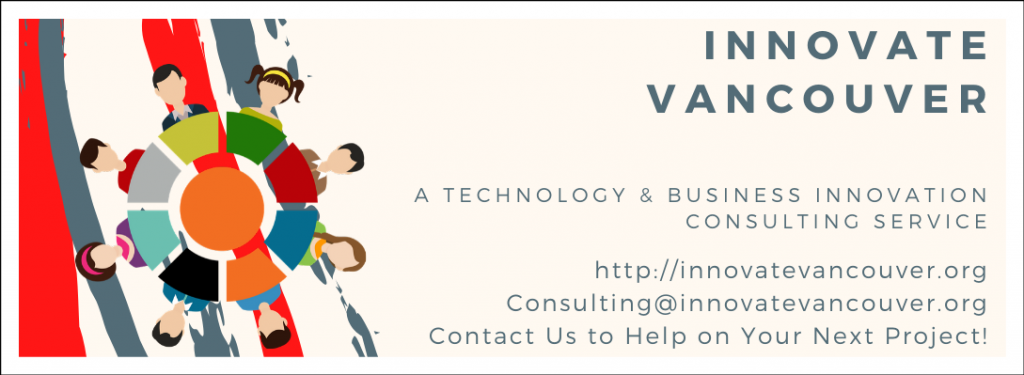The path to developing an effective leadership model is as varied as the definitions often adopted in the business sector. The context in which leadership is being defined strongly determines the quality, integrity, and values that are emphasized. This is just one of the reasons why books and training on leadership remains so popular. There are no one-size-fits all model when it comes to delivering value across varied and completely different business models.
The business literature has always emphasized leadership models that contain integrity, are viewed as fair, and are inclusive of employee and stakeholder interests. Application of these leadership models often deviate according to the business model, risks, resources, competencies, and industry. What is considered professional in one industry may be considered unethical in another. Consider the topic of:
- Profit
- Transparency
- Accountability
- Impact
- Fiduciary Stewardship
- Sustainability
- Ethics
- Respect
- Engagement
- Evaluations
- Learning
- Professional Development/ Promotions
- Recruitment
- Role of Human Resources
- Alignment & Coordination
- Silos
- Hierarchies
- Diversity
- etc.
Not all applied leadership paradigms are equal. What may work and be supported in one environment may lack support, reinforcement, and resources in another. This is true when comparing different industries and when comparing businesses within the same industry. The leadership model adopted determines the values of the business culture. The values of the business culture in turn determine the tools that are used and the quality of their application.
- Lesson 1: Leadership Models are not one-size-fits-all
- Lesson 2: Leadership Models are not all equal
- Lesson 3: Mastering one Leadership Model does not necessarily include mastering another model
- Lesson 4: Misalignment between an espoused Leadership Model and the business culture/ environment will impact its success and realization
- Lesson 5: Business Culture eats Leadership Models for breakfast (an adaption on Drucker’s famous quote, “Culture eats strategy for breakfast.”)
In an era of espoused vs held beliefs a paradigm shift is needed. The previous top-down approach to management has largely been replaced by models that support bottom-up engagement but this has not fixed the problem. Instead a vacuum of indecision has been created where leadership guidance, leadership, and structure risks further deterioration as the social technical forces within the business struggle for dominance. The result is often a quagmire of risks that overwhelm the management team with problems.
- Intent influences what information is shared, and what information is not shared. Also influences why it is shared, and the argument that is shaped.
- Intent also determines whether the content is validated before it is shared. Or whether the information ‘intends’ to clarify, confuse, or simply trigger. Intent influences what is emphasized and de-emphasized.
- Some engage information with the ‘intent’ to understand, others to confirm their original viewpoint. Intent shapes the illusion and vice versa. Intent also determines what questions are asked and not asked.
- To ignore intent is to blindly misunderstand the information provided and the perception it permits of the subject. Objectivity is an illusion. To deny considering intent is to blind the audience.
For example, the value of respect can be used to reinforce the following mechanisms (but with completely different results):
- Terminate an employee that is not a good fit, OR
- Coach an employee that is not a good fit
- Re-evaluate existing on-boarding policies and programs to support new employee success, OR
- Further restrict recruitment practices and hiring criterion
- Evaluate existing strategic, human resource, and executive trends for opportunities to increase improvement across the system, OR
- Heighten focus at the individual performance level
- Continue to uphold exceptional performance expectations but without altering available available support, training, and resources – OR
- Align performance expectations, training, and communication
In such leadership vacuums conflict is engaged with the results usually limited to three potential outcomes:

Normative models for leadership and social citizenship have begun the discussion surrounding full system engagement and dialogue in the pursuit of a sustainable, ethical, and effective leadership model. The problem with these models is that they cannot simply be reverse engineered with the expectation that their values will be automatically realized. The risks of applying any of these models cannot be overstated:
- Top-Down Models: Fail to incorporate information from other sources and thus undermine human resource engagement, employee satisfaction, competency development, and organizational learning.
- Bottom-Up Models: Fail to incorporate information from other sources and thus undermine the sustainability, impact, and efficiency of the business model.
- Reverse Engineered Hybrid Models: Fail to incorporate feedback from an ever changing landscape. This model, when left unattended, often deteriorates to becoming a top-down model.
The now often cited concept of culture fit has often be used as a device that similarly restricts access to values, beliefs, norms, and perspectives. Business models that misapply similarly reverse engineered constructs will continue to realize the same outcomes whether or not they adequately serve the customer, generate sustainable value, or consider the spiritual side of the business model. The fact that the term spiritual side of the business model is open to interpretation underscores its relative definition, and the vacuum in which this construct often exists.

All of these models represent core information drivers upon which to build an ethical, sustainable, and effective leadership model. But what is required is continual engagement, feedback mechanisms, evaluation, and self-reflection in order to insure that the leadership model’s principles are more than espoused; that they are actually lived and reinforced by everything the business does. This requires turning the top-down leadership filter off and listening more; leading with intent and pivoting when the current strategies have unintended, or diminishing, results.
Don’t let business constraints determine your values or the leadership model. Instead, create a vision thru which the business constraints and the business model are realized.
How is your team supporting the development of an ethical, sustainable, and effective leadership model? Share your comments below.
Travis Barker, MPA GCPM
http://twitter.com/innovatevan
Innovate Vancouver is a business development & consulting service and technology startup located in Vancouver, BC. Contact Innovate Vancouver to help with your new project. Innovate Vancouver also gives back to the community through business consulting services. Contact us for more details.




